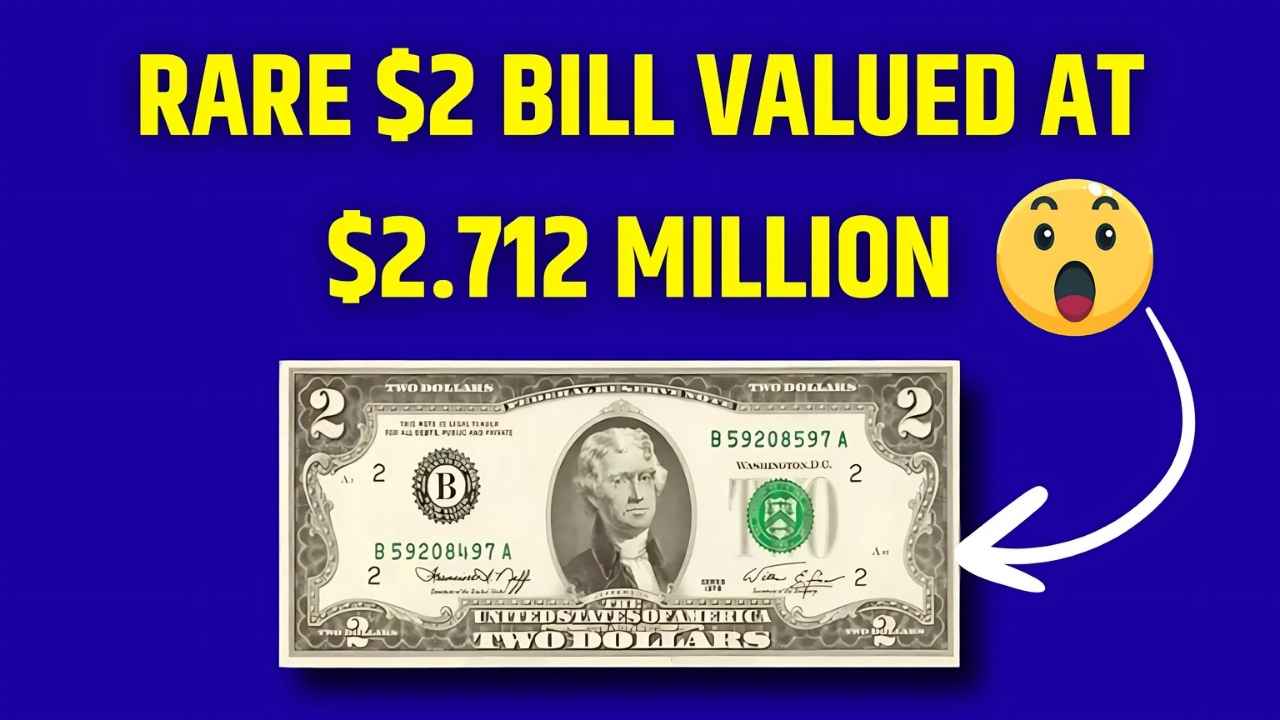Rare $2 Bill: What began as a routine clean-up at a local gas station turned into a headline-making discovery when an old $2 bill tucked away in a forgotten drawer was found to be worth a jaw-dropping $2.712 million. This seemingly ordinary piece of paper currency has now captured the attention of collectors around the globe.
The Accidental Discovery
It happened in the small town of Coins, where a gas station employee was clearing out a neglected storage drawer. Amid old receipts and paperwork sat a crisp, uncirculated $2 bill—an item most people wouldn’t even look at twice. But experts say this is no ordinary bill.
- Found unexpectedly by a gas station worker
- Hidden in a drawer for decades
- Appears completely uncirculated
- Believed to be from the 1963 series
- Estimated value: $2.712 million
The discovery has sparked curiosity, disbelief, and a renewed interest in forgotten currency.
Why the $2 Bill Is So Special
Although $2 bills are still legal tender, most people rarely see them in circulation. That rarity alone adds curiosity. But this specific bill has much more going for it.
| Feature | Detail |
| Year of Issue | 1963 |
| Condition | Uncirculated, mint |
| Design Style | Classic Art Deco |
| Historical Figure | Prominent National Leader |
| Production Halt | 1986 (final major series) |
| Market Rarity | Extremely rare in this condition |
The bill’s condition, age, and story make it an exceptional find.
Why It’s Worth $2.712 Million
Not every $2 bill is worth millions, so what makes this one different? It’s a combination of factors that elevate its value dramatically:
- Uncirculated quality: Zero wear or markings
- Historical significance: Printed during a key era
- Limited availability: Few from this batch remain
- Unique story: Found unexpectedly in a forgotten place
- Collector demand: Currently very high for vintage bills
Together, these factors created the perfect storm for a multi-million-dollar valuation.
What Collectors Say
Currency collectors see value beyond the paper. For them, rare bills are pieces of history, preserved in time.
- They offer a connection to the past
- The designs reflect cultural and artistic heritage
- Many see it as an investment that grows over time
- Each rare bill carries its own story, adding personal value
For serious collectors, owning a rare $2 bill like this isn’t just about money—it’s about meaning.
How Auctions Drive Up the Price
Auction houses are often the setting for record-breaking currency sales. Experts assess the bill’s features, market trends, and collector interest to set a starting price—but bidding wars often take things much higher.
Here’s a look at recent high-value sales of similar rare bills:
| Auction House | Record Sales | Average Range |
| Rare Currency Auctions | $3 million | $2–2.5 million |
| Historic Bids Ltd. | $2.9 million | $2.2–2.6 million |
| National Collectors Guild | $2.5 million | $1.8–2.3 million |
| Elite Collectors House | $2.7 million | $2.4–2.6 million |
This $2 bill is now expected to attract global attention at auction and may even exceed its current estimate.
A New Wave of Currency Collectors
The buzz around this discovery is inspiring a fresh wave of interest in currency collecting. In an age dominated by digital wallets, rare physical money is becoming increasingly valuable—both financially and historically.
More people are joining the community, recognizing that rare currency combines beauty, history, and long-term value. Stories like this keep the passion alive and bring new collectors into the fold.
Frequently Asked Questions
How was the $2 bill found?
A gas station worker discovered it while clearing out a forgotten drawer in the back storage area.
Why is this particular $2 bill worth so much?
Because of its perfect condition, rare production year, compelling backstory, and high demand among collectors.
Are all $2 bills valuable?
No, only specific ones—typically those in excellent condition, with historical value and rarity.
What role do auctions play in valuing rare bills?
Auctions create competitive bidding, which can significantly raise the final sale price based on market interest.
Is currency collecting becoming more popular?
Yes, especially as more people recognize the historical and investment potential of rare bills and coins.




